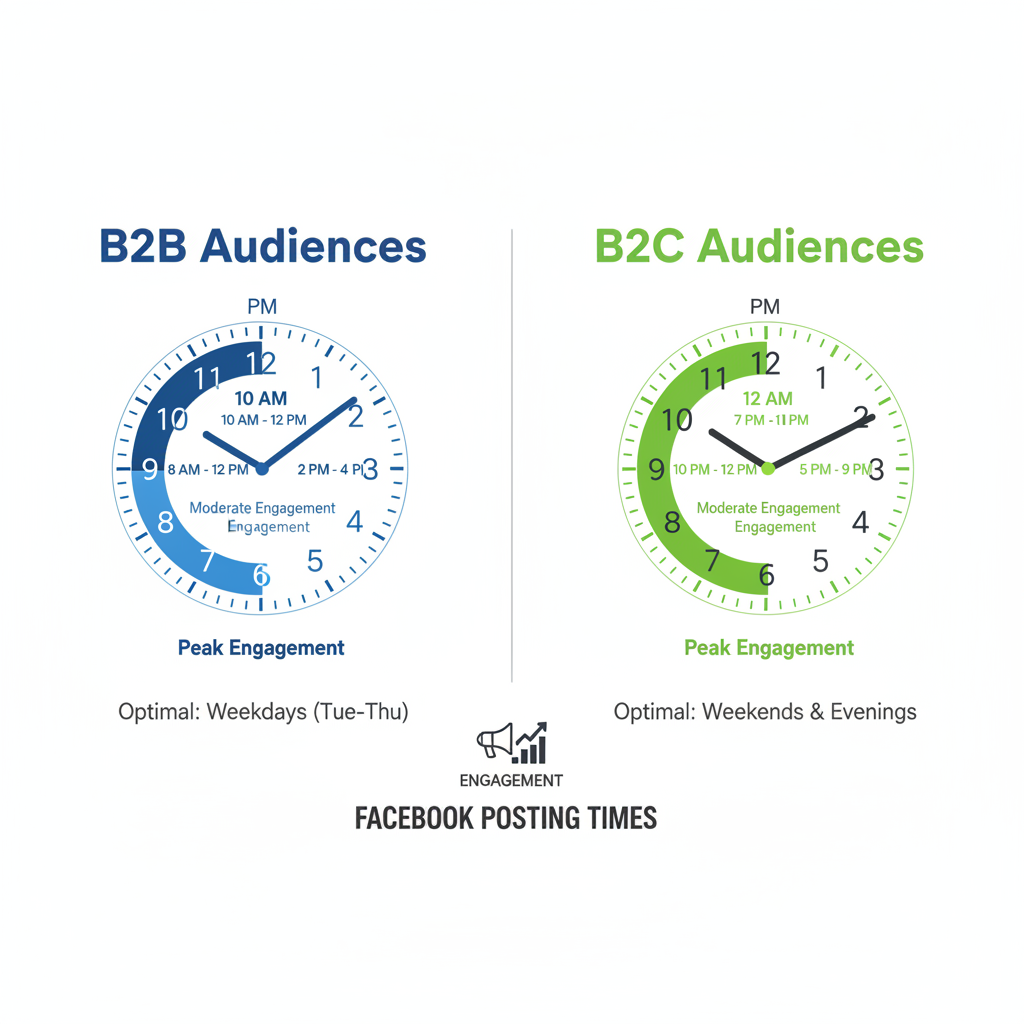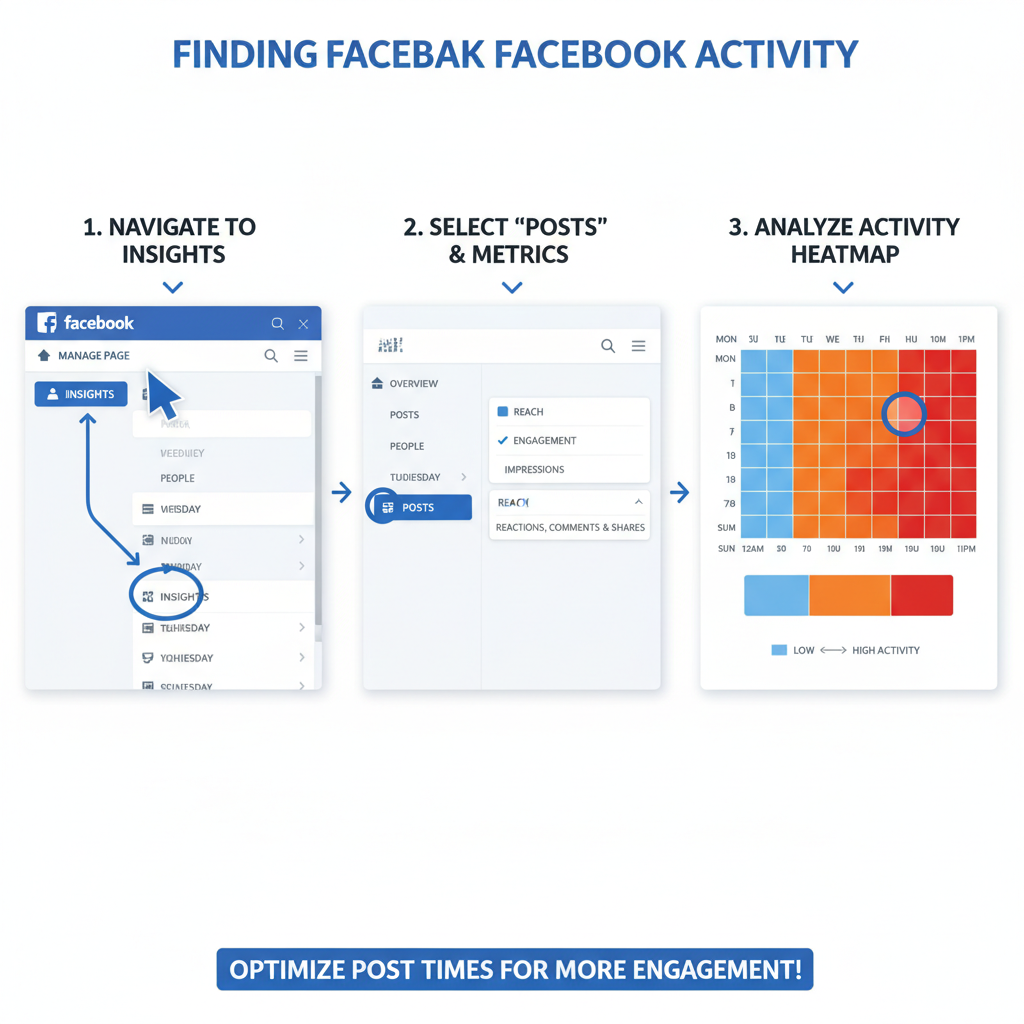Best Time to Make a Post on Facebook for Engagement
Learn how to boost Facebook engagement by posting at optimal times, using audience insights, time zone strategies, and tailored schedules.

Best Time to Make a Post on Facebook for Engagement
Finding and using the best time to make a post on Facebook is one of the simplest and most effective ways to boost your visibility and interaction rates. With millions of daily active users, timing your content so it appears when your followers are actually online can increase likes, comments, shares, and click-throughs.
This guide explains how Facebook’s algorithm treats timing, how to analyze audience behavior with Insights, and strategic posting practices that match your content and audience type.

---
Understanding Facebook’s Algorithm and How Timing Affects Reach
Facebook’s algorithm prioritizes posts using signals such as relevance, interaction, and freshness. Freshness is a time-related factor — the more recent your post when your audience logs in, the higher the likelihood it appears near the top of their feed.
The algorithm considers:
- Recency of the post – How recently it was published.
- User activity – If the user is active at that moment.
- Engagement velocity – Early interactions (likes, comments, shares) that accelerate distribution.
Scheduling posts for your audience’s peak active periods creates momentum during the critical first minutes after publishing.
---
Global vs Local Audience Time Zones
Whether your audience is global or local dramatically affects posting schedules. A single posting time may not maximize reach if followers are spread across different time zones.
Local Focus
Businesses or creators targeting a specific region should post during local peak online times.
Global Focus
For international pages, consider:
- Posting at multiple times for different regions.
- Using scheduling tools to localize publishing.
Example:
A US-based page with followers in New York (EST) and London (GMT) could post at 9 AM EST for the US morning audience and again at 2 PM GMT for the UK afternoon audience.

---
Using Facebook Insights to Identify Peak Activity for Your Page
Facebook Insights offers precise data to discover when your audience is online.
How to check:
- Open your page.
- Select Insights in the left menu.
- Go to Posts.
- Review “When Your Fans Are Online.”
This chart displays daily and hourly engagement trends, ideal for determining your most effective posting window.
---
Common Optimal Posting Times Based on Industry Studies
Marketing studies aggregated across industries provide useful starting points, though your optimal time may differ.
| Day | Optimal Window | Engagement Notes |
|---|---|---|
| Monday | 9 AM – 11 AM | Users often check social media after the weekend. |
| Wednesday | 11 AM – 1 PM | Midweek lull is a good time for content consumption. |
| Friday | 1 PM – 3 PM | Engagement spikes before the weekend. |
| Saturday | 10 AM – 12 PM | Morning browsing dominates weekends. |
---
B2B vs B2C Audience Timing Differences
Audience type shapes when content gets attention.
B2B Trends:
- Active during work hours — early mornings (7 AM – 9 AM) and lunch breaks (12 PM – 1 PM).
- Best days: Tuesday and Thursday.
B2C Trends:
- More evening (6 PM – 9 PM) and weekend activity.
- Best days: Friday, Saturday, Sunday.
---
Weekdays vs Weekends Engagement Rates
Depending on your niche, weekday versus weekend posting yields different outcomes.
- Weekdays: Ideal for corporate, educational, or professional updates.
- Weekends: Suited for entertainment, retail promotions, and lifestyle content.
Hybrid schedules combine both to maintain consistent visibility.
---
Tailoring Timing for Content Type
Matching your post type to audience availability can raise engagement:
- Videos: Best in the evening when audiences have time to watch.
- Images: Anytime during peak browsing periods.
- Links/Articles: Morning or early afternoon for news-oriented readers.
- Live Streams: Schedule to coincide with maximum simultaneous online followers as shown by Insights.
---
Testing Multiple Posting Windows and Measuring Performance
Audience habits shift, so continual testing keeps your schedule effective.
A/B Testing Approach:
- Select 2–3 testing time slots.
- Publish similar content at each slot.
- Track impressions, reach, and interactions via Insights.
Repeat for several weeks to reveal your personal top-performing windows.
---
Seasonal or Event-Based Timing Adjustments
Seasonality matters:
- Holidays: Often high evening engagement.
- Special events: Align posts with trending topics or event timelines.
- Seasonal changes: Adapt to variations in daily routines (e.g., longer summer days).
Retailers can attract more clicks by adjusting morning posting hours during holiday shopping seasons.
---
Tools and Automation for Precise Scheduling
Automation is essential for consistent, optimized posting:
- Meta Business Suite – Native scheduling for Facebook and Instagram.
- Buffer – Multiplatform scheduling and analytics.
- Hootsuite – Includes analytics with automation.
- Later – Visual-first scheduling for image-heavy content.
Strategic use ensures your posts go live exactly at their most impactful times.

---
Best Practices for Consistency and Audience Expectation
Timing works best when combined with routine:
- Stick to a regular weekday/weekend rhythm.
- Use Insights to refine schedule continuously.
- Observe and adapt based on competitor behavior.
- Stay flexible to meet changing audience habits.
---
Summary and Next Steps
The best time to make a post on Facebook is not a one-size-fits-all number; it’s a moving target shaped by your audience’s daily patterns, geography, and content type. Start with industry benchmarks, then adapt using your own Facebook Insights data, seasonal factors, and A/B testing.
By maintaining consistency and leveraging automation, you can sustain higher engagement and strengthen your audience relationship.
Call to Action:
Analyze your Insights this week, test two new posting windows, and track performance for a month. Adjust based on your results to perfect your own Facebook posting schedule.


